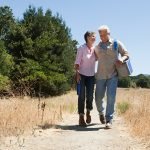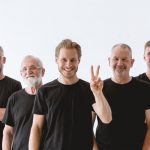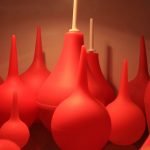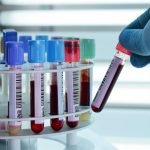Whack-a-Mole: The Future of Naturopathic Medical Education
David J. Schleich, PhD
I’m hoping that by the end of the decade we might have amped up enough to catch up. Even then, though, we may still be worried about how to keep our naturopathic education programs fine-tuned to what is needed in the healthcare landscape. At the same time that we face the continuously expanding universe of naturopathic knowledge, we don’t want to give away our identity topsoil. With these seemingly contrary imperatives afoot, what will be the quintessence of our programs in 2025? Let’s do the etymology.
“Quintessence” comes from the Latin words quinta and essential, meaning: five elements. When ancient Greek philosophers were contemplating what the universe was made of, they settled on 4 elements: earth, air, fire, and water. Later physicists and mathematicians, though, added a fifth, less familiar, essence or element; but even they, strengthened in their views as a profession by the tools of science, are still not sure what dark energy and dark matter are ultimately all about. Even so, Einstein and others, such as Vesto Slipher and Edwin Hubble, worked up their formulas into which they injected, as needed, something called the “cosmological constant,” which has proven to be anything but constant. Einstein was the first to use the Greek symbol, lambda, ƛ, to account for it in his calculations. He knew – and investigators ever since have known – that the value of lambda keeps shifting.
At the risk of laboring a comparison, this “shifting” factor is not unlike at least one key element affecting the universe of naturopathic medical education. That factor is the social/political landscape of healthcare. Admittedly, the comparison is strained; however, the complexity and inevitability in both parts of the metaphor feels just about right.
In many ways, designers of learning have a similar challenge to those trying to figure out how the universe works; that is, they are always encountering the stretching and squeezing of their core ingredients, content and methodology. Just when it appears to make sense for naturopathic curriculum designers, for example, something like the Affordable Care Act (ACA) in America, or the new Regulated Health Professions Act (RHPA) in Ontario, Canada, or the latest assault by our detractors, such as the recent AMA harassment of naturopathic doctors in Texas and Florida, come along to wobble the lambda yet again. This pressure worries curriculum planners and clinicians alike. On the curriculum side of the metaphor, they always face these questions: To keep current and effective, what do we change? What do we emphasize? What do we let go? What do we keep? On the physics side of the metaphor, is matter drawing things together or is something pushing things apart? But I digress.
Four Key Elements of Naturopathic Medical Curriculum
The 4 key elements of naturopathic medical curriculum can be described as follows: traditional theoretical content (our roots, reflected broadly in the writings of the early naturopathic profession); emerging content, incrementally built over time nourished by advancing clinical practice (which in turn finds its way into our classrooms via teachers and texts), naturopathic medical research (which translates into new approaches, modalities, tools, and techniques communicated by studies, seminars, lectures, CEUs, and the like); required competencies, reflecting the politics and requirements of professional practice, public policy and regulatory frameworks; and flexibility and affordability of delivery. The fifth element of socio-political pressure also has to be adjusted every once in a while to keep pace with the constant change in the direction, shape, and size of the curriculum universe (which in turn affects and contains the profession by virtue of producing graduates whose skills have to translate into effective medicine).
That fifth element, in curriculum design terms, can be understood from another perspective, rather than by mere content and skill development reaction to legislative and public policy changes. We might find the work of Donald Schon, in his landmark work, The Reflective Practitioner (1987), particularly useful in navigating those intersecting waves of regulation, tradition, and competition that hit the beachheads of our profession in different jurisdictions at different times. Collectively, these elements and Schon’s version of a “lambda” help describe naturopathic medical education as it manifests in our degree programs (Figure 1). In this regard, Schon’s work verifies that the tiers of professional curriculum repeat in all professions, ours included:
- basic sciences
- applied sciences
- practicum [technical skills of day-to-day practice]
Schon insists that no profession escapes these phases. The great challenge in all of this is that the form and content elements of the curriculum itself vary not only over time, but also from venue to venue despite the accreditation standards of the particular professions accreditor – in our case, the Council on Naturopathic Medical Education (CNME). This element of change pops up faster from little holes all over our curriculum than we can whack ‘em into a coherence and credit-worthiness long enough to declare stability and a sustainable identity. Permit me to indulge this complex comparison a little further.
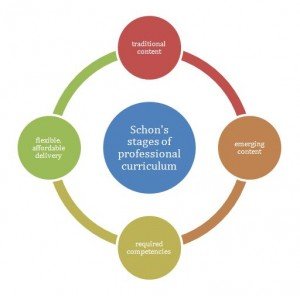
Figure 1. The 5 Formative Elements of Naturopathic Medical Curriculum
Schon contended that the phases of professional education repeat across an entire spectrum or universe of occupations. In addition to pointing out the inevitable pressure of science in all professional preparation, Schon explains that the basic and the applied versions of the scientific content of curriculum occur in that order, followed by actual hands-on experience. Part of the context and background of the development of the curriculum of the naturopathic profession has been a sometimes divisive – and always challenging – debate about the “yearning” which many of the “minor professions” experience in their professional schools, namely, a “yearning for the rigor of science-based knowledge and the power of science-based technique.” (Schon, p.9) Making the process even more unstable, as pointed out by Susan Lieff (2009), is that “ the time lag between needs assessment and implementation of faculty development curricula assumes a certain stability of participants’ individual and contextual needs which may not reflect the often complex and shifting priorities in health professional schools.”
As Schon contended later (1995), “the greater one’s proximity to basic science, the higher one’s academic status.” Professional schools of medicine, in this connection, could easily set out to train healers and socialize them into a profession, but end up with biotechnical problem solvers and not healers/physicians at all, with their art and science in hand. Routinely, the schools of medicine followed a sequence that immersed the student in basic and applied medical sciences and then in supervised clinical practice, all the while proclaiming “evidence-base.” Glazer (1974) describes this approach as a “yearning for the rigor of science-based knowledge and the power of science-based technique.” This fascinating polarity has hugely influenced the development of naturopathic medical education in North America too.
The Tension Between Scientific and Holistic World Views
The existence of a distinct tension between professional orientation [itself not consistent across the profession and often regionally diverse] and student socialization has been discussed by Boon (1996). In her mid-1990s analysis of the scientific and holistic world views of both students and practitioners, she attempted to point out the socialization dimensions of their educational experience. From this baseline, one can quickly discern how significantly the learning outcomes have changed in the subsequent 20 years. We have continuously added into, in this case, the Ontario soup of a changing regulatory and public policy landscape, and we soon need a lambda or two to keep things orderly. Not only is our curriculum getting more and more inundated by decidedly non-traditional content, and our clinical training punctuated, especially in those States where NDs are PCPs, by allopathic practices. And all of this is happening faster, everywhere.
Gieryn’s (1983) discussion over 3 decades ago about the practical problem of constructing some kind of boundary between science and “varieties of non-science” is an important theoretical discussion about the claims to authority which science insists upon. The record shows that naturopathic physicians and their teachers have been consistently attracted to that authority too. Even so, unevenly – but discernibly – they have in many of our programs defined their eclectic professional therapies inside and outside such boundaries. There are even persisting claims that the profession has not embarked fast enough on rigorous research about key modality areas in its repertoire, such as individualized nutritional therapy (Vickers & Zollman, 1999) or chronic diseases, in general (Haynes, 1999). A persistent equivocation in the broader field of clinical practice, and the continuing influence of practitioners on their educational institutions’ priorities, have influenced the development of the profession and those very educational institutions which design and deliver the curriculum. We have been whacking moles forever.
What Schon (1987) accomplishes in his analysis of a variety of professions, all must conjugate (if my argument is to work) through this fifth element – essentially a positivist foundation of the professional curriculum, manifesting in what he calls a “normative curriculum.” The point is that in mainstream medicine, medical doctors self-proclaim as the “real members” whose hierarchy of knowledge – both in training and in practice – have been grounded in basic science, applied science, and technical practice, the very “model” of normative curriculum which Flexner (1910) espoused and Schon (1987) described, and that everyone else falls short of, including DOs, NDs, DCs, PAs, and NPs. Thus, curriculum shifts and turns and moves, popping up with new variations like those little heads in the whack-a-mole game.
In this regard, Schon (1987) investigates notions of rigorous, professional knowledge based on technical rationality [in my view a positivist philosophy], helping link the naturopathic medical curriculum of our schools to the curriculum paradigm of mainstream professions such as medicine, dentistry, law and even architecture. Schon adds, “the most important areas of professional practice lie beyond the conventional boundaries of professional competence.” (p.11)
Schon’s Normative Curriculum
Schon’s “normative curriculum,” characteristic of most professional schools, is a useful way of understanding the “hierarchy of knowledge” which hugely influences the emergence and maintenance of “professional competence” in any professional program; it also goes a long way toward clarifying why that fifth element can be so disruptive. As mentioned, Schon explains that normative curriculum in every professional school, including the naturopathic college, has 3 components: basic science; applied science; and a practicum.
The hegemony of western medicine, Schon would maintain, has been sustained for a long time in this form, without overt coercion, via regulatory frameworks with vested interests and the accompanying power relationships. Ideas about “power and resistance” and what Schon describes as “zones of indeterminacy in practice that call for artistry but are bound by institutional commitments” (1987, p.115) may account for some of the eventual divergence from original curriculum intentions at our schools. In any case, it seems the “outline of professional preparation” (Schon, 1995) was as much the form of “requirements” for the naturopathic students at CNME-accredited schools as for any allopathic medical student. In the end, naturopathic doctors have to go through “board exams” which are far away from clinical ecology and closer and closer to applied biological science. Ours is quite a stretchy universe of expanding curriculum. Lots of dark matter and dark energy out there.
Among other powerful and inter-professional meta-themes in the normative medical curriculum is the study of the question of what the goal of professional preparation for medical practitioners is. We accept that the medical profession’s purposes are as economically motivated as health-oriented; nevertheless, the very question of what health is, arises when public policy permits alarmingly commodified systems, as have evolved in North America. This serious academic, economic, philosophical, and clinical question is as present in the naturopathic medical education structures at CNME-accredited schools as it is in related medical curricula in the allied professions.
Leon Kass (1985) weighs in on this debate. He examines several notions that contribute to a better understanding of health. In the end, Kass argues that it is ultimately not possible to articulate a definition of health. Thus, it is not surprising that Schon, writing about the “varied topography of professional practice,” identifies a crisis of confidence in professional knowledge, and warns us that “debates involve conflicting frames and are not easily resolvable by appeals to data.” (p.119) Kass wants the reader to consider how impossible it is to reduce a pathology or health to some least common denominator of mechanical understanding of cells and blood; that is, how difficult it is to decide what constitutes health. For example, that acetaminophen eradicates a migraine routinely does not constitute a condition of health. Acetaminophen’s toxic impact on the liver is well known by even its manufacturers, and its popularity as a magic bullet for relief has, as leading naturopathic doctors would explain, “masked its real purpose and confused the patient about what constitutes health and what constitutes the masking of symptoms.” (Dr J. Bland, lecture, CCNM, January 16, 2003)
With regard to the larger questions which recur in those debates and curriculum struggles, Dianne Cmich (1984) and Dorothy Lee Bamberg (1982) provide useful discussions that contrast the dominant Western medical model with holistic medicine and can assist in deconstructing some aspects of the curriculum choices which our colleges’ academic leaders seem to feel compelled to make. In particular, Cmich and Bamberg provide tables or lists, embedded in principles about holism and features about holistic health which enable the kinds of comparisons that a normative curriculum would generate.
Reflection In Action
Appropriately, then, Schon’s notion of “reflection-in-action” is very useful to get at what the our education leaders intend in the classroom and clinical curriculum they are constantly formulating. As Schon further explains, it is very difficult to separate identity from professional role. Our naturopathic colleges are increasingly aligned with scientific professionalism, despite protestations about holism and “natural” health systems and treatment designs. As mentioned above, Schon (1987) describes as normative curriculum a sequence of structured learning in which students spend almost 2 full years in a basic sciences curriculum followed by applied science, and then a technical skills practice continuum which the naturopathic colleges call “clinic.” Naturopathic educational leaders call out for more of the practicum element, although the urgency is currently greater for this in the United States than in Canada. This continuum is completely consistent, in any case, with professional allopathic schools and engineering faculties, to name a few. Schon points out too that “the relative status of the various professions is largely correlated with the extent to which they are able to present themselves as rigorous practitioners of a science-based professional knowledge and embody in their schools a version of the normative professional curriculum.” (p.9)
Not only Schon addresses this recurrent theme. Elliott Krause (1996) also helps with an interpretation of the numerous AANMC (Association of Accredited Naturopathic Medical Colleges), CNME, and various colleges’ documents which demonstrate a subtle interplay among commitment to a nature-cure tradition in modality and practice and a purposeful focus on biomedical science and research. There arises in this process direct pressure from practitioners to import new approaches, new therapies, and new medicines as these became available and known, and other direct pressure to keep the traditional modalities and approaches alive and well at the same time.
Schon’s position that the contemporary professional school’s normative curriculum (he writes about this dynamic using examples from musical performance, psychoanalytic practice, and consulting) “leaves no room for reflection-in-action.” This yearning, as mentioned earlier, recurs in the literature as students of professional formation and medical history explore the tension between the practitioner and the medical academic, particularly in terms of the primacy of scientific research.
Krause’s contentions (1999) add some light to this multifaceted conversation. His ideas help us to see that the various dimensions of what he describes as “guild power” could well inevitably apply as much to the naturopathic profession as to any other group which strives to create institutions around its work. Power comes, Krause says, through dimensions of power over association, workplace, and market. Added to these is power over the relation to the state. The naturopathic profession appears to fit into this political and social process quite handily. The fifth element keeps the moles popping up no matter what we do.
Although it’s not clear that the educational institutions which the naturopaths have created in Oregon, Washington, Ontario, Connecticut, Illinois, British Columbia, and Arizona have altogether become “a version of yet another scholars guild” (Krause, 1999), or that the naturopathic profession has irretrievably plugged right into a capitalist model as depicted by Krause, certain elements are present in the history of the development of our schools which we must not eschew. We may yet have to dust off Schon’s “lambda” more than once in order to repair this accumulating muddle. In our era of evidence-based medicine, the uncertainty about whether the 5 elements of curriculum are producing amazing naturopathic doctors rather than a subspecialty of holistic physicians is a little embarrassing after all these years. Even so, the game persists, and as we whack more and more popping gophers, the quintessential nature of naturopathic medicine may yet be figured out.
 David J. Schleich, PhD, is president and CEO of NCNM, former president of Truestar Health, and former CEO and president of CCNM, where he served from 1996 to 2003. Previous posts have included appointments as vice president academic of Niagara College, and administrative and teaching positions at St. Lawrence College, Swinburne University (Australia) and the University of Alberta. His academic credentials have been earned from the University of Western Ontario (BA), the University of Alberta (MA), Queen’s University (BEd), and the University of Toronto (PhD).
David J. Schleich, PhD, is president and CEO of NCNM, former president of Truestar Health, and former CEO and president of CCNM, where he served from 1996 to 2003. Previous posts have included appointments as vice president academic of Niagara College, and administrative and teaching positions at St. Lawrence College, Swinburne University (Australia) and the University of Alberta. His academic credentials have been earned from the University of Western Ontario (BA), the University of Alberta (MA), Queen’s University (BEd), and the University of Toronto (PhD).
References:
Bamberg, D. L. (1982). Holistic health, human ecology and you. Occupational Health Nursing, 30(11), 21-24.
Boon, H. (1996). Canadian Naturopathic Practitioners: The Effects of Holistic and Scientific World Views on Their Socialization Experiences and Practice Patterns (PhD thesis). University of Toronto. (OCLC No. 191872622)
Cmich, D. E. (1984). Theoretical perspectives of holistic health. Journal of School Health, 54(1), 30-32.
Flexner, A. (1910). Medical Education in the United States and Canada Bulletin No. 4. Reprint, New York, NY: Arno Press; The New York Times, 1972.
Gieryn, T. F. (1983). Boundary-work and the demarcation of science from non-science: strains and interests in professional ideologies of scientists. American Sociological Review, 48, 781-795.
Glazer, N. (1974). The schools of the minor professions. Minerva, 12(3), 346-363.
Haynes, R. B. (1999) Commentary: A warning to complementary practitioners: get empirical or else. BMJ, 319(7225), 1632.
Kass, L. (1985). The end of medicine and the pursuit of health. In: Kass, L. (Ed.). Toward a More Natural Science. New York, NY: The Free Press, 157-186.
Krause, E. A. (1999). Death of the Guilds: Professions, States, and the Advance of Capitalism, 1930 to the Present. New Haven, CT: Yale University Press.
Lieff, S. J. (Jan., 2009). Evolving Curriculum Design: A Novel Framework for Continuous, Timely, and Relevant Curriculum Adaptation in Faculty Development. Academic Medicine, 84, 127-134.
Schon, D. (1987). Educating the Reflective Practitioner. San Francisco, CA: Jossey-Bass Publishers.
Schon, D. (Nov/Dec., 1995). Knowing-in-action: The new scholarship requires a new epistemology. Change, 27(6), 27-34.
Vickers, A. & Zollman, C. (1999). ABC of complementary medicine. Unconventional approaches to nutritional medicine. BMJ, 319(7222), 1419-1422.


